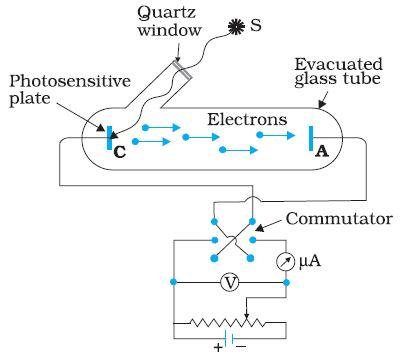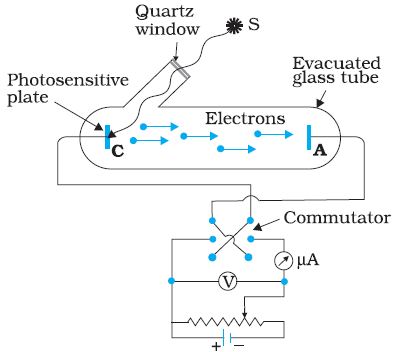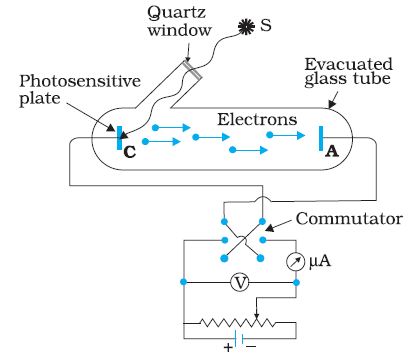Dual Nature of Radiation and Matter - Online Test
Q1. work function of a metal is the
Answer : Option B
Explaination / Solution:
When the light strikes on a metal surface, electrons on the surface of the metal get energy from the light and get emitted from the surface. There will be no photoemission from a metal surface below a certain frequency of light. For photoemission minimum frequency of incident light is required. This minimum energy of an electron is called work function.
Q2. In which case is electron emission from a metal not known?
Answer : Option A
Explaination / Solution:
No Explaination.
Q3. Photoelectric effect is
Answer : Option B
Explaination / Solution:
When the light strikes on a metal surface, electrons on the surface of the metal get energy from the light and get emitted from the surface. It is found that there will be no photoemission from a metal surface below a certain frequency of light. The phenomenon of emission of photoelectron from a metal surface by light of suitable frequency is called photoelectric effect.
Q4. Photoelectric effect is possible
Answer : Option D
Explaination / Solution:
Emission of photoelectron takes place when energy of incident photon is greater than that of work function of material. Work function is different for different material. Photoelectric effect takes place for both UV and visible light depending on work function.
Q5. In Photoelectric effect
Answer : Option B
Explaination / Solution:
In photoelectric effect emission of photoelectron takes place. So that photocurrent is flow in circuit.
Q6.
In the above experimental set up for studying photoelectric effect, if keeping the frequency of the incident radiation and the accelerating potential fixed, the intensity of light is varied, then


Answer : Option D
Explaination / Solution:
With increase in intensity no. of photon incident increases. So that more electron emitted from metal and photo current increases with increase in intensity.
Q7. Stopping potential in the experimental set up shown in figure is


Answer : Option A
Explaination / Solution:
The negative potential of the plate at which the photo electric current becomes zero is called stopping potential or cut-off potential. Its value is negative because some electron reach to the plate with their kinetic energy at zero potential.
Q8. For a given frequency of light and a positive plate potential in the set up below, If the intensity of light is increased then


Answer : Option C
Explaination / Solution:
With increase in intensity no. of photon incident increases. So that more electron emitted from metal and photo current increases with increase in intensity.
Q9. In various experiments on photo electricity the stopping potential for a given frequency of the incident radiation
Answer : Option B
Explaination / Solution:
The stopping potential is defined as the potential necessary to stop any electron even the electron with the most kinetic energy from reaching the other plate. By changing radiation intensity only no.of emitted electron changes their Kinetic energy will not change.
Q10. In various experiments on photo electricity dealing with the stopping potential dependence on frequency of incident radiation , the conclusion was that stopping potential
Answer : Option A
Explaination / Solution:
The stopping potential is defined as the potential necessary to stop any electron even the electron with the most kinetic energy from reaching the other plate. Kinetic energy of electron depends on frequency not on intensity of incident radiation.
